Oak Processionary Moth
Posted on 31st July 2019 at 14:34
What are Oak Processionary Moths?
This non-native moth has been found in London and Berkshire. It causes a risk to human health as well as seriously damaging trees.
Oak Processionary Moth (OPM) is a recent introduction into the UK. It gets its name from the distinctive processing behaviour of the caterpillars because they tend to move in nose-to-tail lines. The caterpillars of these moths feed on oak leaves leading to a severe loss of foliage which can weaken the trees and make them more vulnerable to other diseases. However, the main concern with this pest is the threat to human health because the caterpillar hairs can cause severe allergic reactions.
Where do Oak Processionary Moths come from?
Caterpillars of the oak processionary moth, Thaumetopoea processionea, are a native of central and southern Europe. Probably entered Britain as eggs laid on young trees imported from Europe for planting here.
Found in 2005 in London and now breeding in several locations in south and west London, and in West Berkshire – including several Woodland Trust sites milder weather and reduced late frosts could enable the moth to survive and breed further north than its traditional native range. Likely that it could survive and breed in much of England and Wales.
Caterpillars
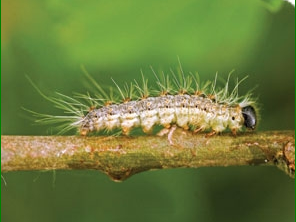
They have a distinctive habit of moving about in late spring and early summer in nose-to-tail processions, from which they derive their name. The processions are often arrow-headed, with one leader and subsequent rows of several caterpillars abreast;
Live and feed almost exclusively on oak trees. They can sometimes be seen processing across the ground between oak trees;
Will usually only affect other broad-leaved tree species if they run short of oak leaves to eat - they have been observed feeding on sweet chestnut, hazel, beech, birch and hornbeam. However, they generally cannot complete their development on other tree species;
They cluster together while they are feeding on oak leaves and moving from place to place;
Are only seen in mid- to late spring and early summer (May, June and July);
Have very long, white hairs which contrast markedly with the much shorter, almost undetectable irritating hairs;
Have a grey body and dark head. Older larvae have a central dark stripe with paler lines down each side;
Are not usually found on fences, walls and similar structures, such as garden furniture.
Nests

Their nests are built in early summer, they are made on the trunks and branches of oak trees.
Nests are almost never made among the leaves of oak trees, or on any other tree or shrub species, or on fences, walls and similar structures.
They are made of distinctive, white, silken webbing, which are accompanied by white, silken trails on the trunks and branches of oak trees, which become discoloured after a short time and are more difficult to see as a result, as do the silken trails.
Nests occur in a range of shapes, including hemispherical (half a ball), tear-drop shaped, bag-like, and like a blanket stretched around part of an oak trunk or branch and range in size from a few centimetres wide to stretching several feet up the trunk.
These can occur anywhere from ground level to high in the oak tree and can also fall out of oak trees and be found on the ground and can remain attached to the trees for many months after the larvae have pupated and the adult moths have emerged.
Several nests can occur on the same tree or branch. Older caterpillars feed mainly at night and rest up in their nests during the day. Later in the summer they retreat completely into the nests as pupae, re-emerging a few weeks later as adult moths.

Tree Health
OPM caterpillars can be a hazard to oak trees because they feed on the leaves. Large populations can strip
trees bare, leaving them vulnerable to other pests and diseases and less able to withstand events such as
drought and flood.
How to spot an Oak Processionary Moth
They often form arrow-headed processions, with one leader and subsequent rows containing several caterpillars abreast
They are most likely to be found in oak trees, and sometimes on the ground under oak trees
They are most likely to be seen in late spring and early summer
They have very long, white hairs which contrast markedly with other, shorter hairs
They do not live on fences, walls and similar structures, as some caterpillar species do
They build distinctive white, silken webbing nests on the trunks and branches of oak trees (almost never among the leaves), and leave white, silken trails on the trunks and branches
Their nests and trails become discoloured after a short time, and more difficult to see as a result
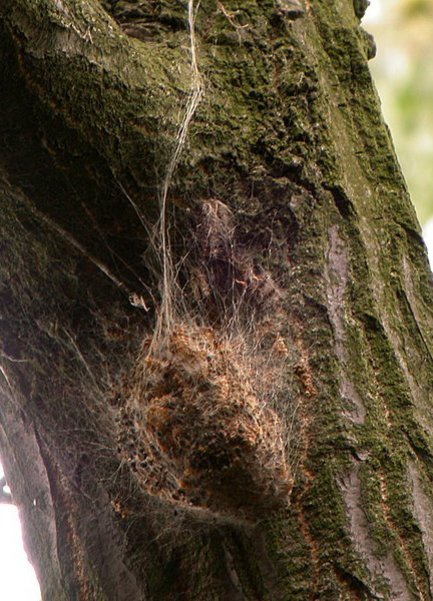

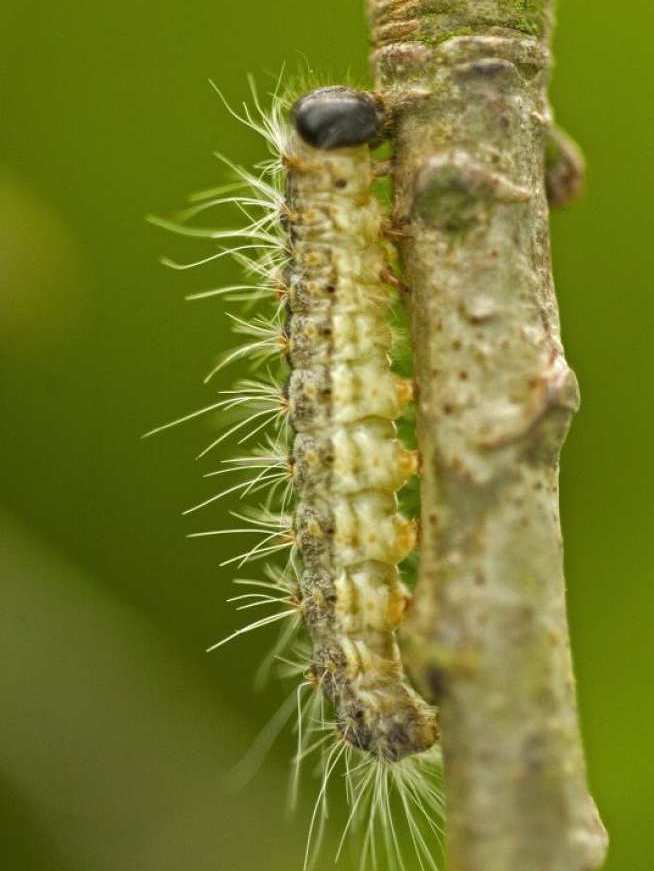
Oak Caterpillar

Cluster in bright sunlight

A nest disintegrating
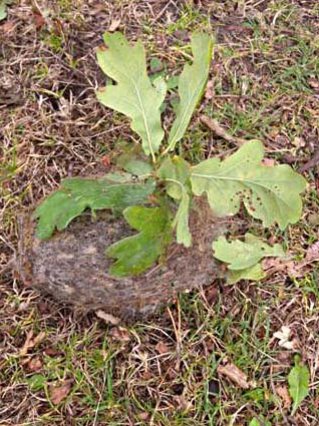
Nest fallen to the ground
The Health Risk to Humans
Caterpillars of the Oak Processionary Moth (OPM) are a pest which can be a hazard to the health
of oak trees, people and animals.
However, the main concern with this pest is the threat to human health because the caterpillar hairs can cause severe allergic reactions.
The caterpillars have thousands of tiny hairs which can be blown about by the wind. These hairs contain an irritating substance called thaumetopoein.
Contact with the hairs can cause itchy skin
rashes, eye and throat irritations and occasionally, breathing difficulties in people and animals.
Health precautions
To minimise the health risks:
do not touch or approach OPM nests or caterpillars;
do not let children or animals touch or approach nests or caterpillars;
do not try removing nests or caterpillars yourself.
For further information see surreyheath website >
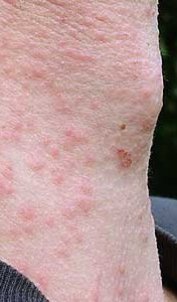
If in doubt ... contact Cedardale Tree Surgeons and Arboriculturists.

As a member of the Arboricultural Association and the International Society of Arboriculture, Cedardale is well placed to offer advice on any aspect of tree care. Call us today on 01256 763162.
Latest OPM News as it happens ....
Oak processionary moth pest discovered on Cardiff trees
A plant health notice has been issued which requires the treatment and felling of infested material, four trees planted near Cardiff Central Station are affected and will be chopped down.
Tagged as: Oak Processionary Moths
Share this post:


